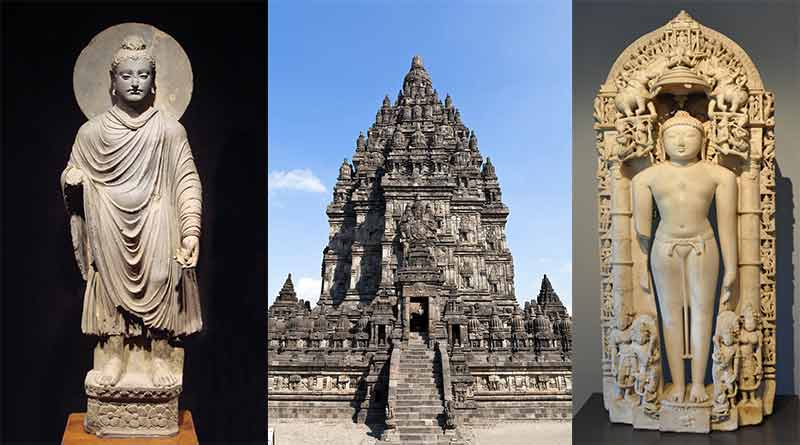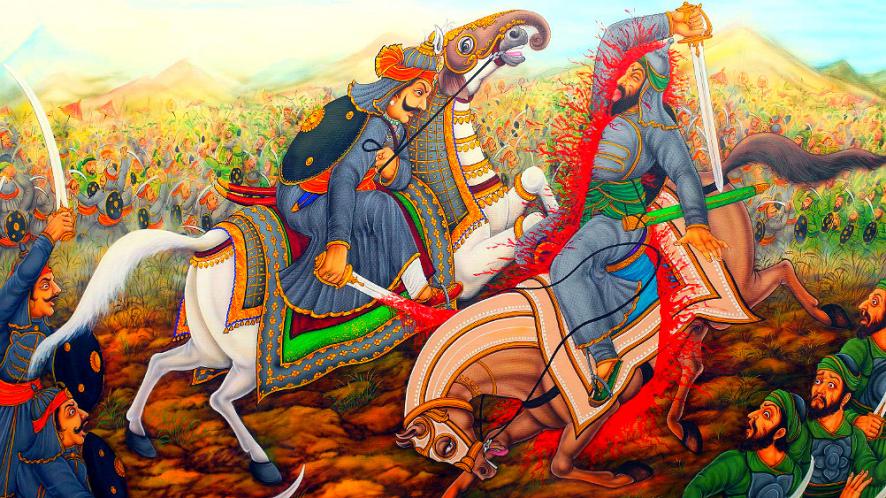Tiger Cave Painting
A Tiger hill is located on the left bank of the Baghini river, a tributary of the Narmada, 80 KM from Madhya Pradesh and 144 KM northwest of Indore. Like Ajanta, Buddhist Viharas have been built here too. Smith estimates that after the Completion of cavity construction at Ajanta, the cavities were engraved into the tiger.
What is Chaityagrha and Vihar?
Some copper plates like Ferguson and Burgess have inscriptions in Brahmi script, whose time has been set from fourth and fifth century. Probably these caves have been constructed by
the Feudatories of the Gupta’s who ruled in this area.
Tiger caves are made by cutting Vindhya hills. They were first detected by Danger Field in 1818 AD. The number of these caves of 9, of which the murals of the fourth-fifth caves are in most protected state. These Paintings are different from the paintings of Ajanta in the sense that their subject matter is related to cosmic life rather than religious.
The fourth-fifth caves of the tiger are jointly called Rang Mahal. Their Porch is mixed. Most of the paintings have been mad made on their Porch and inner walls. 6 scenes are particularly famous. The first scene is of two young women sitting in an open pavilion in the Raj Bhavan, In which one princess and other is her servant. The princess’s body is full of ornaments. She is keeping her hand on the servant’s shoulders and listening carefully to her.
Two pigeon pairs are painted on the parasol. The second scene is of two couples, Those who sit in front of each other seem to be absorbed in the debate. There is a man women on the left, Whose crown on both head is indicated to be the king queen. The second pair on the right is the commoner.
Flora notation is on the page portion. The third is a music scene. It has two distinct groups of men and women. The group of 6 men are enjoying the music of women. A women is portrayed playing a veena in the middle of the group. One has a crown on her head making her look like a heroine. All are adorned wearing ornate garments and jewelry.
They are all shown dancing in groups. They have instruments like Mridang, Kartaal, kansyatal etc. in their hands. On the left is dancer with bizarre costumes between seven women, who wearing a pearl beads. Three women are playing poles. one Mridang and three Manjira are shown playing. There is also a dancer in the circle of six women in the right group. The Costumes of men and women of both groups are beautiful. The Hair style of women are attractive. The circular dance is called hallisak in the Indian tradition. The origin of this hallisak is believed to be form Lord Krishna’s Raasleela. This form of Indian music was perfectly suited to the funky city life of the Gupta period. In the fifth scene the
collective dance is displayed watching the emperor and his cavalry soldiers. In this picture, soldiers riding on horses are going on a procession. All men and women are wearing beautiful jewelry and clothes.
The roof of the tiger cave has a beautiful depiction of humans, animals, birds, flowers, creepers etc.
In this way, we can say that the painting of tiger like Ajanta is also admirable. As far as the differences between the pictures of Ajanta and tiger are concerned, that is, the tiger cave paintings have not been coated. Lime whitening was done on the smooth wall and pictures have been made on drying it.
Reference : https://www.indiaolddays.com



